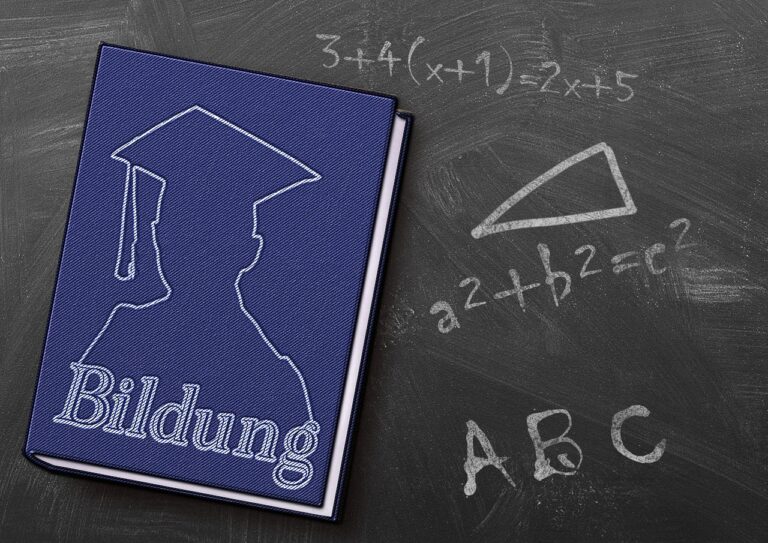Addressing the Digital Divide in Access to Education
Limited internet access poses a significant obstacle for students striving to excel academically. Without consistent access to the internet, students may struggle to complete online assignments, conduct research, or participate in virtual classroom discussions. This lack of access can hinder their ability to fully engage with the curriculum and may impede their overall academic performance. Additionally, students with limited internet access may face challenges in accessing educational resources, online learning platforms, and communication tools necessary for a comprehensive learning experience.
In today’s digital age, the internet is a vital tool for student success, and the disparities in internet access present a pressing issue for educational institutions and policymakers. The divide in internet access can exacerbate existing inequalities in educational outcomes, as students from underserved communities are disproportionately affected. Without the necessary resources to support their learning outside the traditional classroom setting, students with limited internet access may struggle to keep up with their peers, leading to a widening achievement gap. Addressing the challenges of limited internet access for students is crucial in ensuring that all students have equal opportunities to succeed academically.
– Limited internet access hinders completion of online assignments
– Difficulty in conducting research without consistent internet access
– Inability to participate in virtual classroom discussions
– Lack of access to educational resources and online learning platforms
– Communication tools necessary for comprehensive learning experience are inaccessible
In today’s digital age:
– Internet is a vital tool for student success
– Disparities in internet access present pressing issue for educational institutions and policymakers
– Divide can exacerbate existing inequalities in educational outcomes
– Students from underserved communities disproportionately affected by lack of internet access
– Without necessary resources, students struggle to keep up with peers, widening achievement gap
Addressing challenges of limited internet access:
-Crucial for ensuring all students have equal opportunities to succeed academically
Impacts of Technological Inequality on Educational Achievement
Technological inequality in education exacerbates existing disparities among students. Those who lack access to necessary technological resources face challenges in keeping up with their peers who have more advanced tools at their disposal. This inequality can hinder students’ ability to engage with online learning materials, conduct research, and participate in virtual classrooms effectively.
Moreover, limited access to technology can also impact students’ digital literacy skills, putting them at a disadvantage in today’s increasingly tech-driven society. Without the opportunity to develop proficiency in using digital tools, students may struggle to acquire the essential skills needed for success in the modern workforce. Ultimately, the effects of technological inequality on educational achievement highlight the urgent need for solutions to bridge the digital divide and ensure equal opportunities for all students.
Strategies for Providing Technology to Underserved Communities
One approach to address the technology gap in underserved communities is through collaboration between government entities, educational institutions, and private sector organizations. By pooling resources and expertise, these stakeholders can work together to provide access to devices, internet connectivity, and technical support to those in need. This coordinated effort can help bridge the digital divide and create more equitable opportunities for all students.
Additionally, community initiatives such as donation drives, refurbished device programs, and mobile technology labs can play a crucial role in expanding technology access in underserved areas. These grassroots efforts can mobilize local support and resources to ensure that students have the tools they need to succeed in today’s increasingly digital world. By tapping into the collective goodwill of community members and organizations, these initiatives can make a meaningful impact in narrowing the technological inequality gap.
Why is limited internet access a challenge for students in underserved communities?
Limited internet access can hinder students’ ability to complete online assignments, access educational resources, and participate in virtual learning opportunities.
How does technological inequality impact educational achievement?
Technological inequality can widen the achievement gap between students in underserved communities and their more privileged peers, as those with limited access to technology may struggle to keep up with digital learning requirements.
What are some strategies for providing technology to underserved communities?
Some strategies include partnering with community organizations to distribute devices, offering discounted or free internet access to low-income families, and providing technology training and support for both students and parents.
How can schools ensure that all students have equal access to technology?
Schools can implement initiatives such as one-to-one device programs, technology lending libraries, and mobile hotspots for students to take home. Additionally, schools can collaborate with local businesses and government agencies to secure funding for technology resources.







